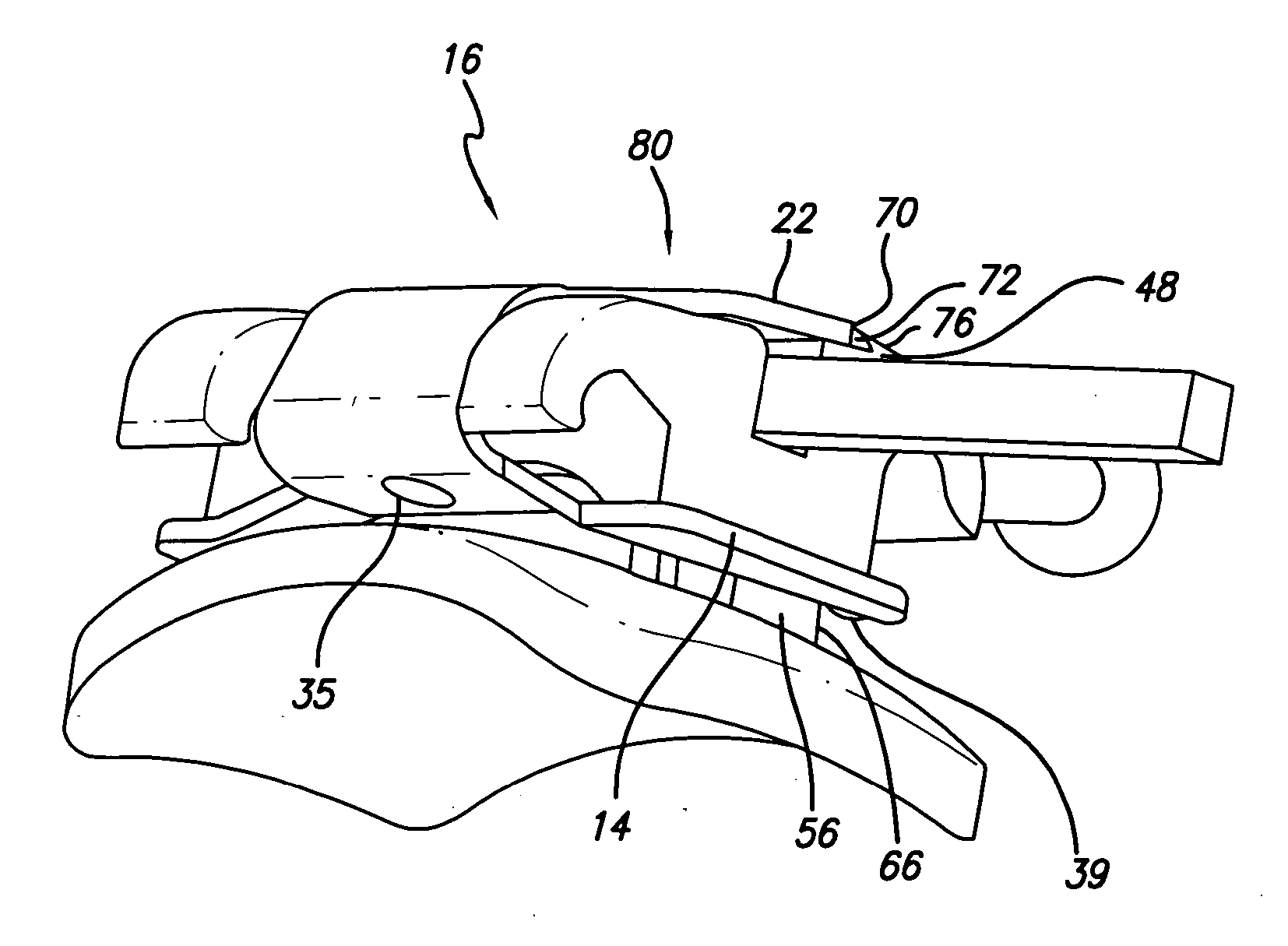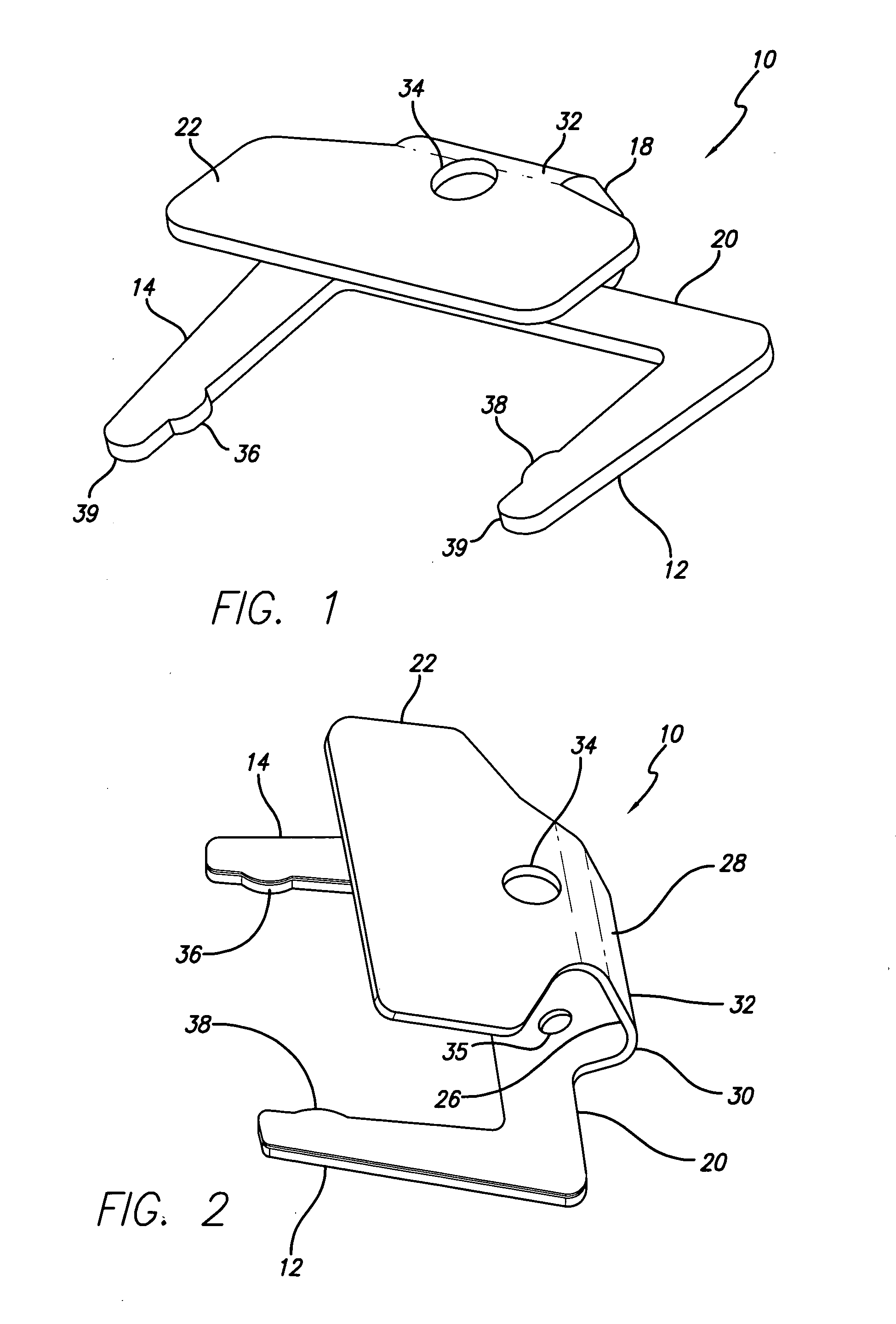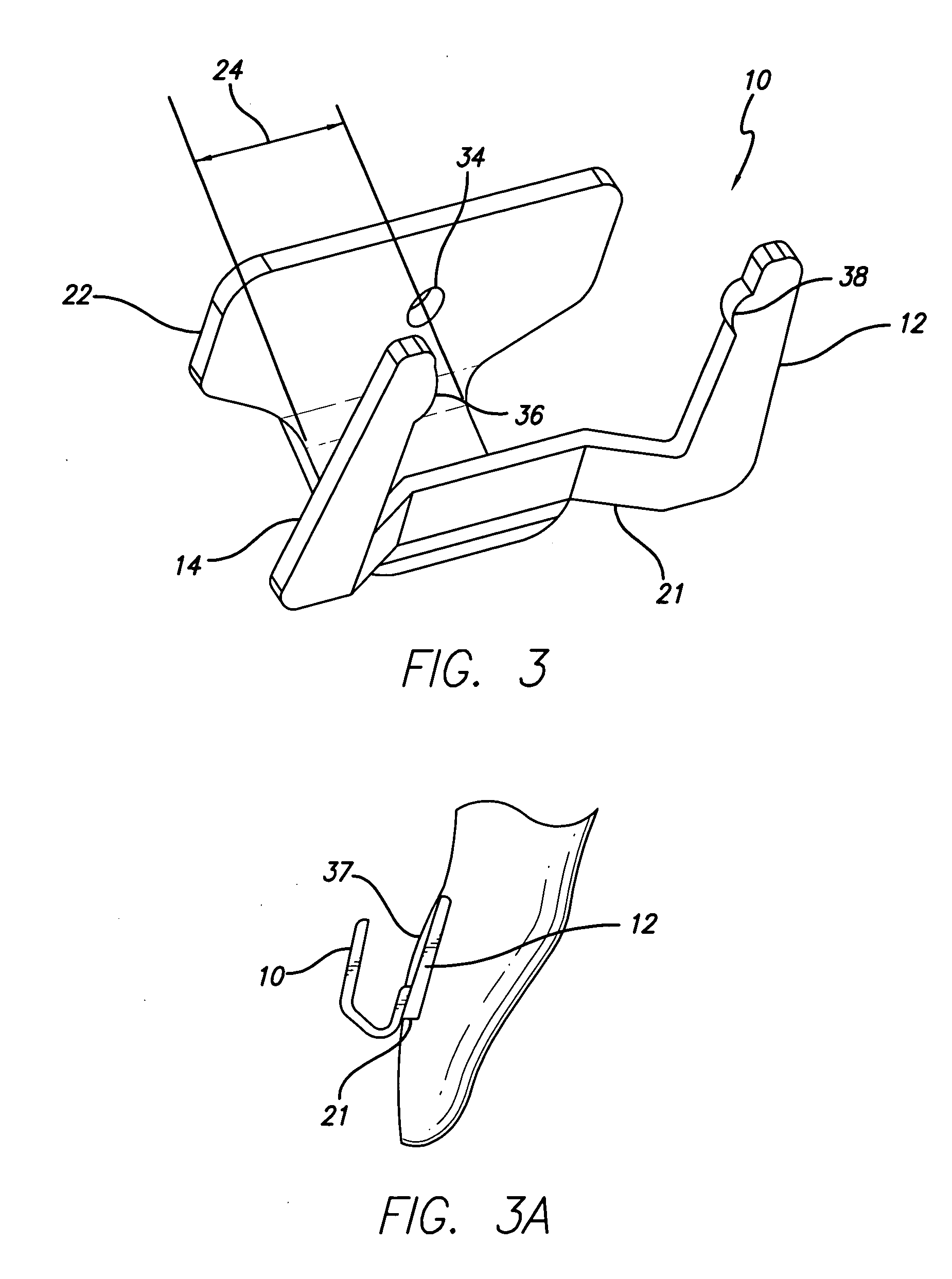Round archwires used early in treatment are not considered as being true Edgewise wires because being round in cross-section, they are incapable of imparting tortional correction forces against the flat slot walls and floor.
In
orthodontics, this type of force acting on the roots of the teeth is called “torque.” To clarify this point, it must be understood that had such wires been used at the beginning of treatment, significant patient discomfort would have resulted, along with insult to the
periodontal membrane surrounding the root of the tooth.
Such wires are incapable of spanning the large deflections encountered earlier in treatment without exceeding the effective physiological force range for
tooth movement.
To clarify this point, it must be understood that had such wires been used at the beginning of treatment, significant patient discomfort would have resulted, along with insult to the
periodontal membrane surrounding the roots of the teeth anchored in the alveolar supporting bone.
Further, such an archwire used inappropriately early in treatment would be likely to take a set and matallurgically yielding.
As described above, round wires are not capable of imparting torqueing forces to a tooth because they lack features needed to engage the Edgewise configuration of the archslot and therefore, they can only tip teeth around an unseen center of resistance in the supporting bone.
Since such a large portion of an orthodontic patient's time in the orthodontist's chair is consumed by changing archwires in this manner, and since such routine archwire changes constitute a major cost to the orthodontic practice and contribute to the
cost of treatment for the patient, much inventive effort has gone into identifying innovative chairside systems that reduce the time and cost associated with archwire changing.
The use of elastomeric O-rings however introduce new difficulties and concerns.
For example, they can discolor and
stain and they can lose their
tractive force capabilities as they absorb water in the mouth.
In either case, any instruments for
ligature placement must be sterilized after each use, thus requiring specific in-practice procedures which involve measurable cost.
In reviewing the general field of self-ligating brackets, both proposed and commercialized, it can be said that all versions that employ a vertically-sliding clip inherently compromise
patient comfort.
Patient comfort is compromised through the use of such brackets due to the fact that overall bracket prominence must be increased in order to accommodate the increased labial-lingual or buccal-lingual thickness of the bracket driven by the addition of a vertical slot.
In some cases these problems become so severe that orthodontic treatment must be curtailed all together.
As orthodontic patients, they unfortunately pay little attention to instructions from their attending orthodontist to avoid putting certain types of things in the mouth (popcorn, frozen candy bars, crunching ice, etc.).
It is on this area that destructive forces are concentrated and it is at this point that a bracket may structurally yield to those forces.
If brackets could be designed with higher prominence, they could much more easily withstand destructive forces but their higher prominence would result in unacceptable levels of patient discomfort.
Such advances, however, can ultimately prove useless if self-
ligation features drive the height of a bracket
system to an unacceptable level where a patient cannot tolerate them.
Even though many prior art self-ligating bracket features may desirably reduce friction and mechanical binding, they nonetheless require a deviation away from the useful twin or Siamese-type bracket design that incorporates two sets of tie-wings.
Such prior art self-ligating designs are limited and incapable of delivering certain corrective forces to the teeth.
These alterations can compromise the benefits of utilizing a twin orthodontic bracket.
Some of the current self-ligation brackets have designs that are not easy to use during the course of orthodontic treatment.
They can be harder to space to disengage the
orthodontic wire during treatment or to allow for the next sequential archwire to be space-engaged in its place.
High angles of archwire deflection as an archwire enters and exits the archslot of such a bracket cannot be accommodated.
Highly deflected archwires, such as those typically used early in treatment can circumvent such self-ligation features thereby causing special problems for the orthodontist and greatly compromising the otherwise positive advantages of self-ligation.
Some of the current self-ligation brackets do not allow for the ligation cover to be removed during orthodontic treatment.
Additionally, if the ligation cover comes off the bracket body for some reason during treatment, the ligation cover can not easily be put back in its place to continue the course of treatment without having to remove the entire bracket from the tooth and replace it with a new bracket.
Prior art bracket assemblies can also have clips that undesirably pop open or can be difficult to open or close.
One difficulty of prior art self-ligating brackets is that they tend to become encrusted with calculus, plaque and oral
bacteria.
Such a configuration makes it impossible to get a toothbush in place to reach such small internal features.
It is known that all too often, the clips of prior art self-ligating brackets become bound up and locked in place due to buildup of hard plaque deposits.
 Login to View More
Login to View More  Login to View More
Login to View More 


